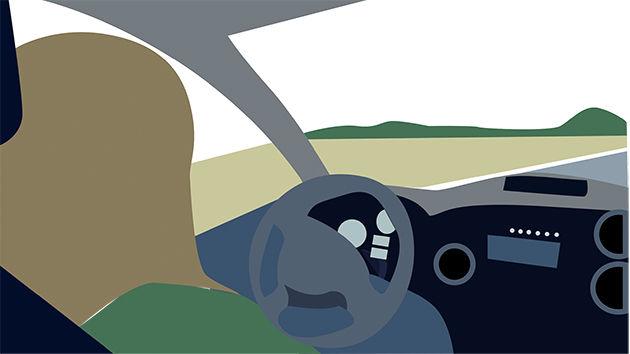As the technology for automated vehicles, or AVs, becomes increasingly developed, legal policies are being made to accommodate this new technology.
In recent years, car manufacturers have begun to include more automatic features in their vehicles to enhance both safety and style, and, according to researchers, it seems this is only the beginning of automation technologies. Because of this, government regulations are developing in response to potential risks or threats to human safety.
Jason Wagner, associate transportation researcher with the Texas A&M Transportation Institute (TTI), said automated cars range in capabilities depending on their specific degree of automation.
“Automated vehicles right now have relatively low levels of automation,” Wagner said. “There’s classifications for talking about automated technologies. There’s six levels of automation, from 0 to level 5.”
Wagner said the most highly automated vehicles that are currently commercially available are still relatively minor compared to what could be introduced in the future.
“The most advanced ones that are on the market right now are at about level 2,” Wagner said. “Level 5 is a fully automated vehicle that can drive in all situations at or above the level of a human driver. Right now, automation is relatively simplistic and it can just do things like keeping pace with traffic or monitoring blind spots.”
Ginger Goodin, director of the Transportation Policy Researcher at TTI, said there are several questions regarding the safe and practical applications of vehicle automation which have prompted government regulation of the technology.
“What the federal government has done is put out some guidelines, saying, ‘If you’re going to develop these kinds of vehicles, there are certain criteria we want you to be considering. Like, what environment can it operate in? How are you going to protect data privacy? And what happens in a situation where the car can’t negotiate what’s in the driving environment?’” Goodin said.
Because automation is still relatively new, Goodin said policy makers are not yet able to anticipate every issue or hazard that could arise.
“We’re starting to do some explorations ourselves and we’re looking at the existing laws in the transportation code,” Goodin said. “We’re thinking about this technology as we understand it, and as we read the code, we say, ‘Okay, does the code still make sense if the operator is a self-driving car?’ When these laws were written, we didn’t even know that these technologies were on the horizon. It wasn’t considered.”
According to William Kohler, senior counselor in the Corporate Finance Practice Group of Dykema, one of the major components of safe vehicle automation the communication between cars.
“The National Highway Traffic Safety Administration is requiring that new vehicles, as they are manufactured, be equipped with radio frequency connectivity so that you can have what’s called ‘V to V’ — vehicle to vehicle — connectivity,” Kohler said.
In concordance with Goodin’s uncertainty about the legal prospects of AVs, Kohler said right now it is too early to tell. Specifically addressing accidents involving automated cars, he is not sure how the situation would play out.
“It would be a very complicated situation and the traditional legal framework wouldn’t apply,” Kohler said.
Kohler said they are looking to states which are already implementing policies regarding AVs to prepare for the future.
“At the state level, we’re watching state laws very closely,” Kohler said. “Michigan just passed a very generous autonomous vehicle law that was signed by the governor, where the system is the operator of the vehicle. That would seem to relieve the owner of the vehicle from responsibility. You can’t really call them the driver, they’re more of a passenger.”
Emerging regulations on automated vehicles focus on safety, potential risks
February 27, 2017
Photo by Graphic by Rachel Grant
Automated cars that are currently on the roads actually have a relatively low level of automation in comparison to the potential they have.
0
Donate to The Battalion
$0
$2500
Contributed
Our Goal
Your donation will support the student journalists of Texas A&M University - College Station. Your contribution will allow us to purchase equipment and cover our annual website hosting costs, in addition to paying freelance staffers for their work, travel costs for coverage and more!
More to Discover








